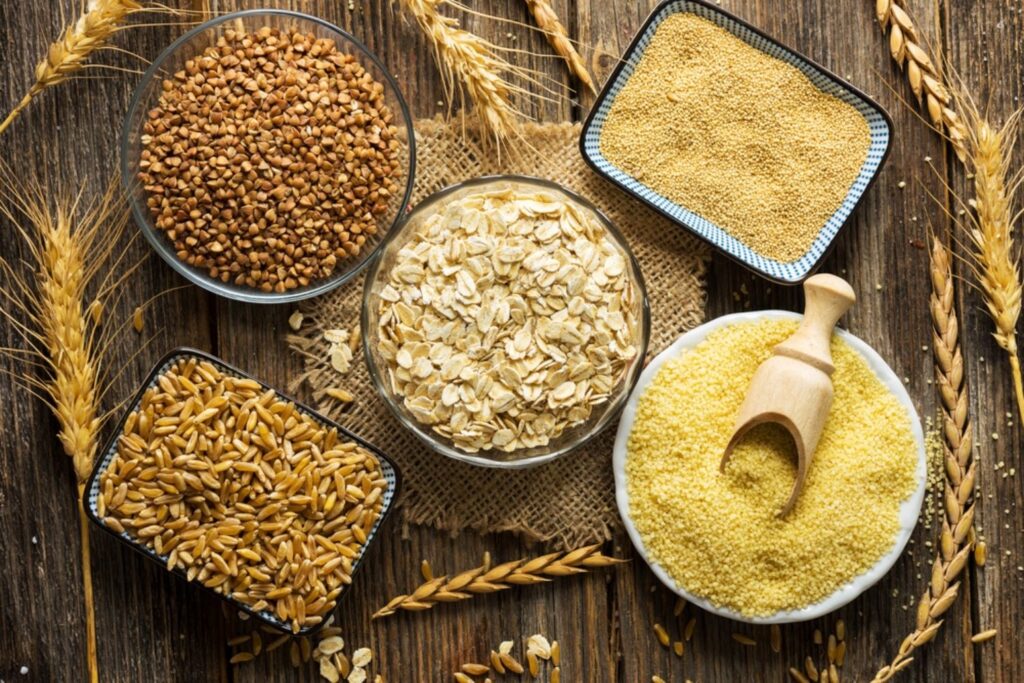By Chris Mohr
MY KIDS eat breakfast cereal all the time. Yes, they eat it for breakfast, but sometimes they’ll eat it for after-school snack or for what they call “first dinner,” which occurs before practices that otherwise conflict with our family’s dinner time.
Not only do I not care that they’re eating what some people might consider “sugary” cereal, but I’ve been known to join in.
Not only do I love my quality time scarfing down bowls of nostalgia-inducing cereal, but I also know that that very cereal is giving us nutrients we need.
Yes, “we” (defined as anyone over 2 years of age) likely aren’t getting all the nutrients we need in our diets. Collectively these nutrients are known in the dietetic world as “shortfall nutrients.”
One study published in the journal Nutrients examined the National Health and Nutrition Examination Survey (NHANES) data from 2011 to2014. The analysis found that of the adults assessed, fiber, folate, and iron (in women only) were all low.
What’s more, the 2015-2020 Dietary Guidelines for Americans suggested that there are other nutrients we fall short on, including vitamins A, D, E, C, folate, calcium, magnesium, fiber, potassium, and iron.
Sounds almost like the side of a multivitamin label, doesn’t it?
Missing out on the above nutrients, especially over a long period of time, can affect everything from your eyes to your skin to your brain to your bones. But the challenge with multivitamins is that they’re one more thing to add to your dietary to-do list.
You know what goes down a lot more easily than a pill, with the same complete nutrition, and costs about 50 cents a serving?
Fortified cereal.
Brierley Horton, M.S, R.D., co-host of the Healthy Eating Podcast, and mom of two, is with me on my stance.
“On any given day we have at least three varieties of cereal in our pantry, most often five. And the varieties we have at the ready might surprise you. Think: Lucky Charms, Cocoa Krispies or Cocoa Pebbles, Honey Nut Cheerios, etc.,” Horton says.
“I’m ok with these for a few reasons. First, your non-organic big brand name cereals are fortified with A LOT of nutrients. (That’s not always the case with organic or other niche diet versions.) So, my kiddos are getting a nice variety of vitamins and minerals in the cereal, plus a healthy serving of milk. Second, they’re learning to be more self-sufficient: at 6 and 9, they can “make” themselves a bowl of cereal for breakfast. Third, cereal often doubles as an after-school snack or dessert, and I’d rather a bowl of cereal versus some of the other common go-to choices for snacks or dessert.”
Like Horton mentioned, most breakfast cereals are fortified with a host of vitamins and minerals, can provide fiber, depending on the choice, and when paired with cow’s milk and topped with fruit—that bowl of cereal that has been poo-pooed many times over actually becomes one of the most nutritious and cost-effective meals of the day—and best multivitamin you’ll eat.
Now you might be thinking: “Okay, sellout—how about just eating some fruits and vegetables to get your nutrition and giving the same to your kids?”
Because while the recommendation to eat more fruits and vegetables is certainly important and worthwhile, such a recommendation is not just elitist, it’s also naïve to the daily habits of most.

At a recent conference I attended in Washington D.C. called FoodFluence, I saw data presented that examined just that question: What would happen if ready-to-eat cereals and complementary foods with the cereal, like milk, were eliminated for those 5 to 18 years of age?
The researchers found that if these cereals were excluded from the diets of those who currently enjoy them, vitamin D intake would decrease by about 59%, iron by 48%, calcium by 33%, fiber by 19%, and many other vitamins and minerals following similar patterns. Those are some steep drops.
This isn’t to mention that the current average daily fiber (and whole grain) intake is only about half of what’s needed. Many cereal choices can add to both of those too.
I can almost see your eye rolls now, worrying about the added sugar intake as well. “Well allow me to retort,” spoken in my best Samuel L. Jackson voice from Pulp Fiction.
According to the Analysis of What We Eat in America, NHANES, 2013-2016, “breakfast cereals & bars” make up just 7% of the total added sugar consumed (compared to 24% from sugar sweetened beverages, 19% from desserts and sweet snacks, 11% from coffee & tea, 9% from candy, and 19% from “other sources.”
So now please allow me to pour myself a nice bowl of Wheat Chex, one of my favs, top it with some milk and a handful of raspberries.
And with that bowl I’ll be eating more fiber (8 grams from the cereal + 8 grams from the berries) than the average person eats in a day, 14 grams of protein (8 grams from the milk + 6 grams from the cereal) and at least one of my many servings of fruit I’ll eat during the rest of the day.
I’ll also be eating a whole lot of vitamin J, too. That’s “J” for “joy—another shortfall nutrient missing from too many of our diets.
This article was first published on Men’s Health US.
















